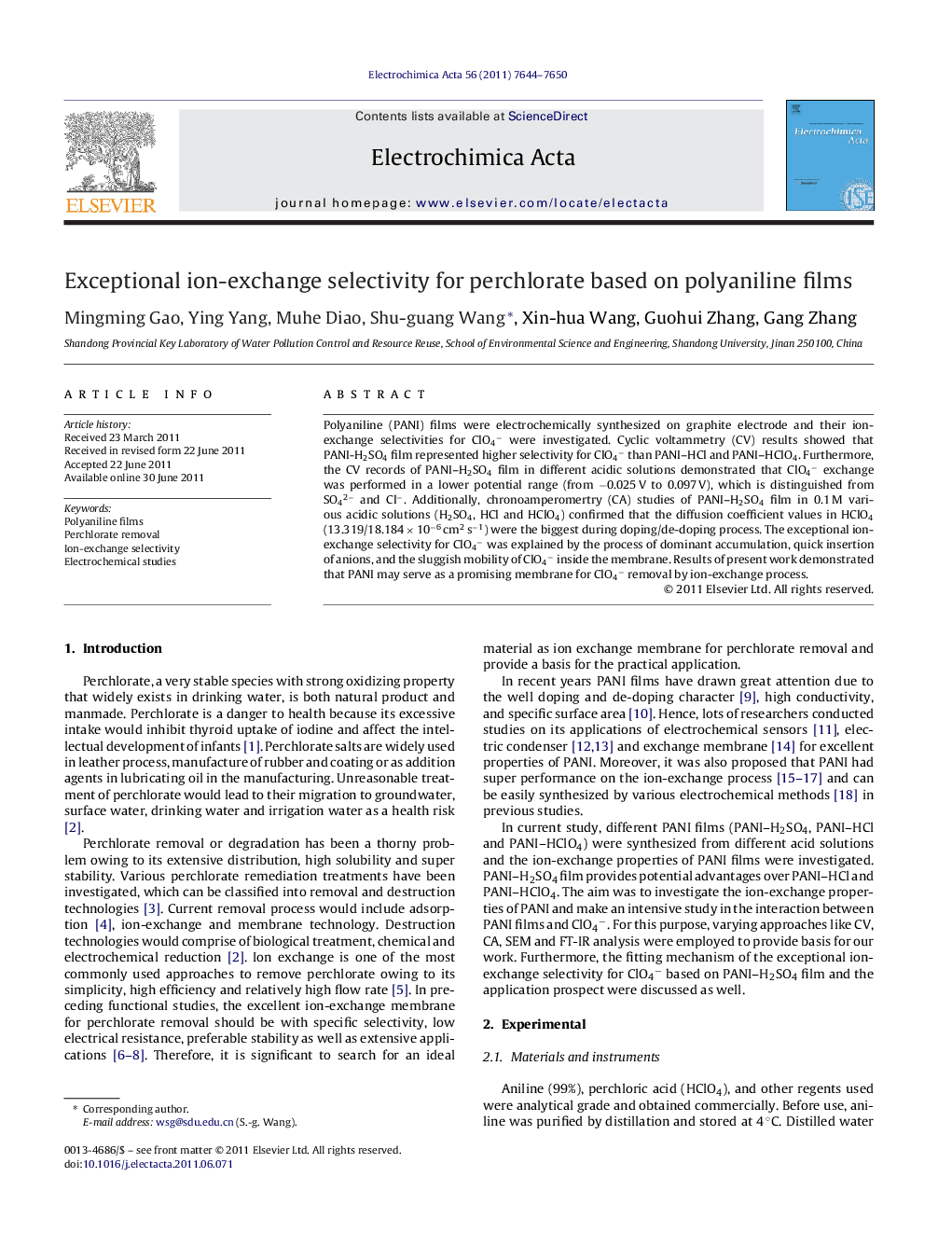| Article ID | Journal | Published Year | Pages | File Type |
|---|---|---|---|---|
| 190824 | Electrochimica Acta | 2011 | 7 Pages |
Polyaniline (PANI) films were electrochemically synthesized on graphite electrode and their ion-exchange selectivities for ClO4− were investigated. Cyclic voltammetry (CV) results showed that PANI-H2SO4 film represented higher selectivity for ClO4− than PANI–HCl and PANI–HClO4. Furthermore, the CV records of PANI–H2SO4 film in different acidic solutions demonstrated that ClO4− exchange was performed in a lower potential range (from −0.025 V to 0.097 V), which is distinguished from SO42− and Cl−. Additionally, chronoamperomertry (CA) studies of PANI–H2SO4 film in 0.1 M various acidic solutions (H2SO4, HCl and HClO4) confirmed that the diffusion coefficient values in HClO4 (13.319/18.184 × 10−6 cm2 s−1) were the biggest during doping/de-doping process. The exceptional ion-exchange selectivity for ClO4− was explained by the process of dominant accumulation, quick insertion of anions, and the sluggish mobility of ClO4− inside the membrane. Results of present work demonstrated that PANI may serve as a promising membrane for ClO4− removal by ion-exchange process.
• The preparation of PANI films and their selectivities for ClO4− exchange. • PANI–H2SO4 showed exceptional ion-exchange selectivity for ClO4−. • The mechanism of ion-exchange process at PANI-H2SO4/ClO4− interface was expounded. • PANI could effectively extract and release ClO4− in a low potential range.
